Zombie fires smolder in Canada under layers of snow amid fears the thaw will bring another smog-filled summer to the US
Zombie fires are smoldering under layers of snow in Canada as the remnants of last year’s massive wildfires remain in the area.
The zombie fires, or flameless, slow-burning fires that occur beneath the Earth’s surface, have raised fears that the thaw will bring another smog-filled summer to the US.
Firefighter and scientist Sonja Leverkus said that while driving in a snowstorm in her small British Columbia town in November, she noticed that the snow was not white, but had a blue-gray color from the smoke.
“I’ve never seen a snowstorm that smelled like smoke,” Leverkus said.
Now those fears could bring another wave of smog and haze to the US, as much of the East Coast experienced in the summer of 2023.
Zombie fires continue to smolder under layers of snow in Canada and cannot be extinguished due to a lack of firefighters taking off-season breaks. Now there are fears that they could once again impact the US as they did over the summer
Throughout the summer, large parts of the US, from the Northeast to the Great Lakes, are prepared for several more days of smog, while Canadian officials deal with more than 400 wildfires.
A thick, nicotine-yellow haze enveloped the Big Apple’s famed skyline on Wednesday as the city became the most polluted in the world, with an Air Quality Index score soaring above 400, considered “hazardous.”
More than a dozen U.S. states and more than 100 million people are under air quality warnings, prompting many to start wearing pandemic-era masks.
Health experts warned that breathing in the mist could be as harmful as smoking 22 cigarettes a day. Nanoparticles from the smog are so small that they can enter the lungs and bloodstream, with side effects including irritation of the eyes and throat and breathing problems.
“The Canadian wildfires currently pose a common risk to almost all New Yorkers.” Acting Health Commissioner James McDonald said at the time.
“Our risk from this exposure is based on our own personal underlying health conditions.
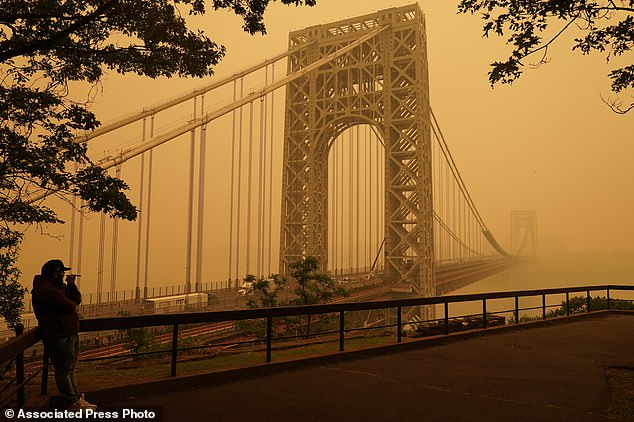
A man talks on his phone as he looks through the haze at the George Washington Bridge in Fort Lee, New Jersey on June 7
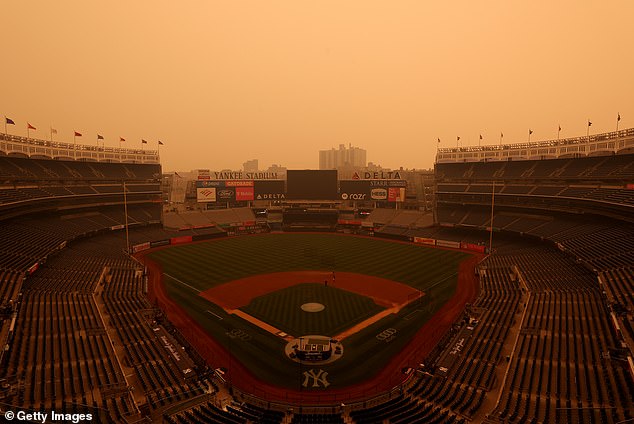
New York’s Yankee Stadium pictured in hazy conditions ahead of a game between the New York Yankees and the Chicago White Sox, which has since been postponed due to poor air quality
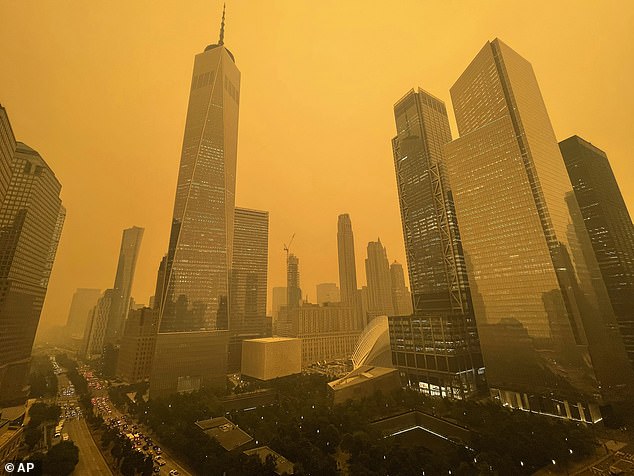
The smoky yellow haze enveloped the city and lasted for days
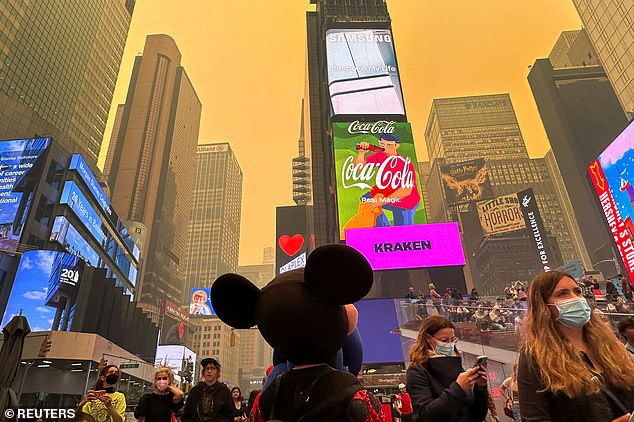
An orange fog blanketed the entire city on Wednesday as health officials warned against exposure to the pollution
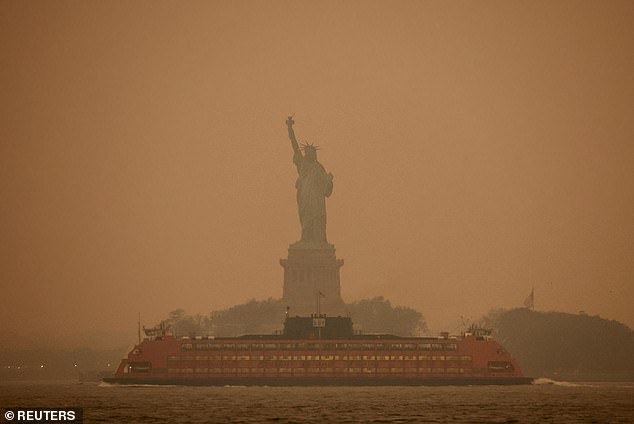
Manhattanites could barely see the Statue of Liberty across the Hudson River due to poor visibility
“Those New Yorkers with underlying conditions such as lung or heart disease are at increased risk from this exposure and are encouraged to adjust their activities accordingly.”
A cloud of smoke from the wildfires first descended on New York on Tuesday before growing thicker throughout the afternoon and Wednesday, blocking those in Manhattan from seeing the New Jersey skyline across the Hudson River.
In addition to sending New Yorkers indoors, air quality warnings were also introduced in states including Massachusetts, New Hampshire, Pennsylvania, Maryland, Illinois, Virginia and the Carolinas, according to the National Weather Service.
On a day during the smog, Chicago also recorded the worst air quality in the world yesterday as it too was consumed by smoke from the fires. The city was marked as having unhealthy air with a reading of 175 AQI, while parts of Michigan reached higher.
The index is a measure of five common pollutants and runs on a scale from 0 to 500, with a score above 150 considered “unhealthy.”
According to the index at the time, Washington DC, Minneapolis, Chicago and Detroit all ranked in the top ten for the worst air quality in the world.
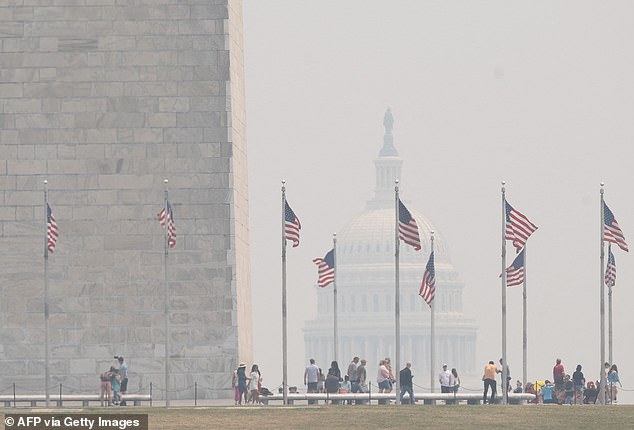
Washington, DC, was covered in smog all of Wednesday and it is expected to stick around for several days
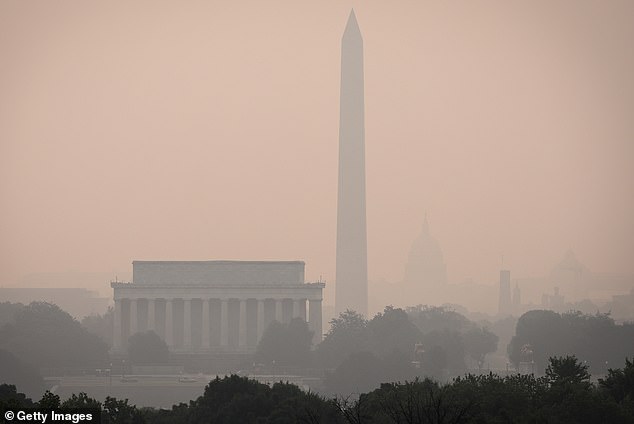
Hazy skies over the Washington, D.C., skyline, one of several East Coast hubs affected by the smoke
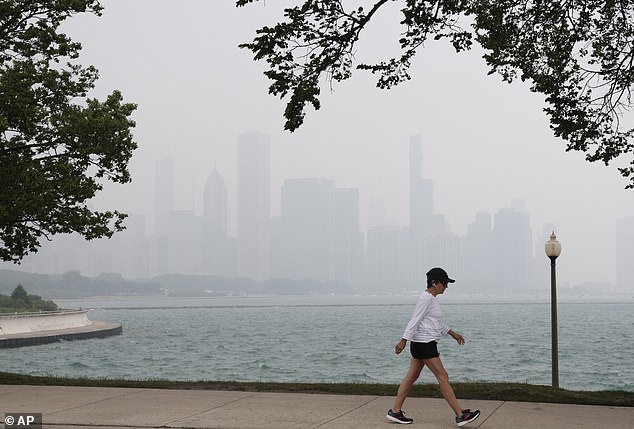
Chicago’s skyline is covered in haze from the Canadian wildfires, as seen from Solidarity Drive, amid heavy smog from the Canadian wildfires
Today in Canada, the plumes are still visible in February, even as temperatures dropped dramatically. According to Forrest Tower, a fire information officer with British Columbia Fire, the fires cannot be extinguished manually due to a lack of firefighters during the off-season break.
Zombie fires, also called overwintering fires, are kept alive by peat moss, an organic soil common in the forests of North America, and by thick layers of snow.
Over the past decade, British Columbia has experienced an average of five to six zombie fires that have continued to burn. BBC reported.
In January, the Canadian province saw a record 106 active zombie fires, something scientists fear could impact the risk of future wildfires and have linked them to a possible early start to the wildfire season.
According to provincial data, 91 fires are still burning in the area, even though most of these overwintering fires are burning out on their own.
The data also shows that fires that persist into March could increase the chance of renewed fires once temperatures rise and snow melts.
Jennifer Baltzer, professor of biology at Wilfrid Laurier University and the Canada Research Chair in Forests and Global Change, said the continued smoldering is “very alarming to see.”
More than 44 million hectares of land were destroyed by the fires in 2023 and was one of the most fatal wildfire seasons, with several firefighters dying while battling the blazes.
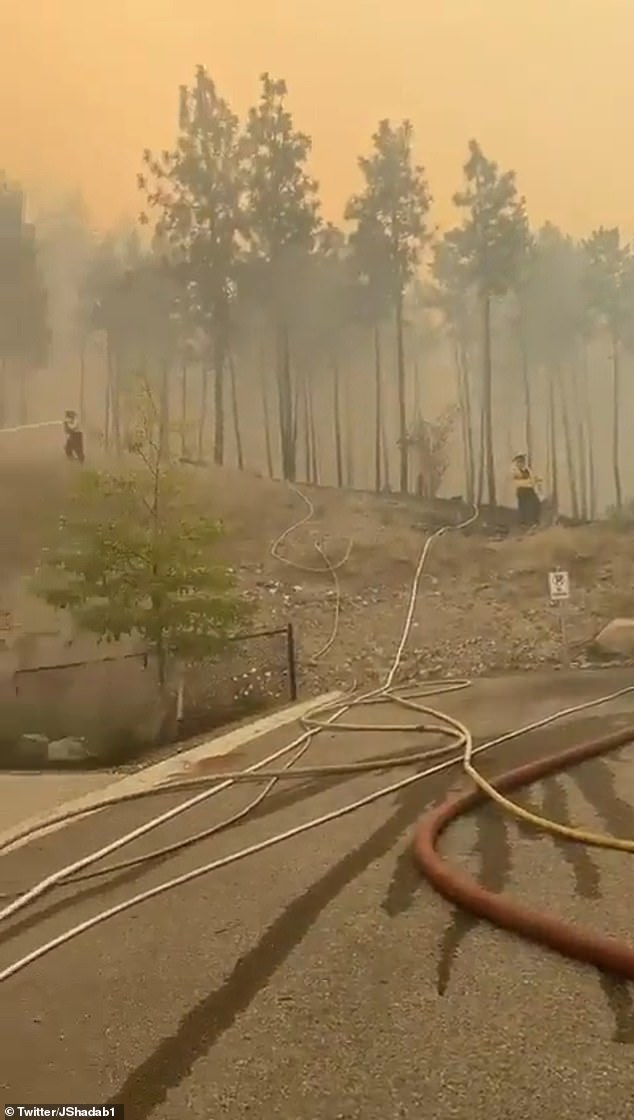
Burned trees were seen in social media posts about Canada’s wildfires
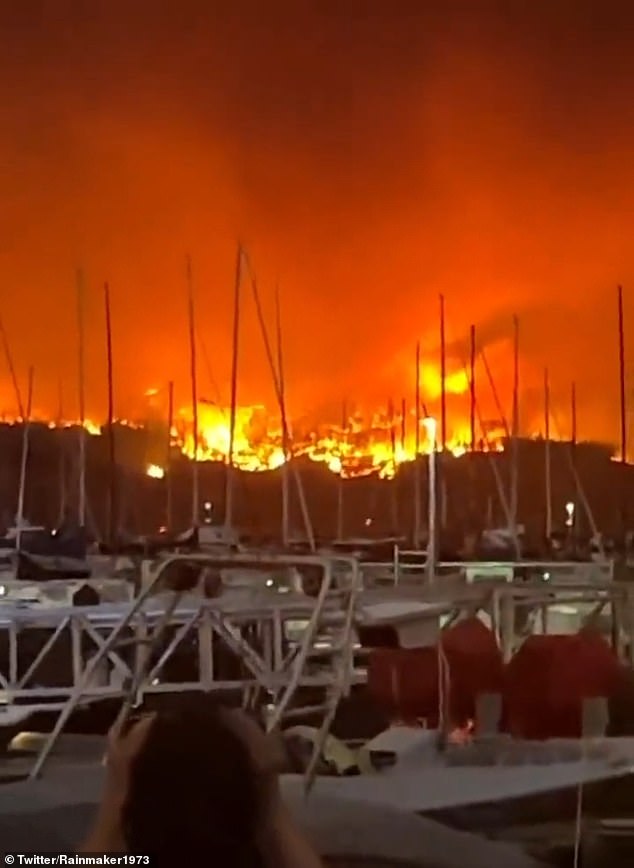
The wildfires spread across large parts of Canada and caused haze and smog in parts of the US
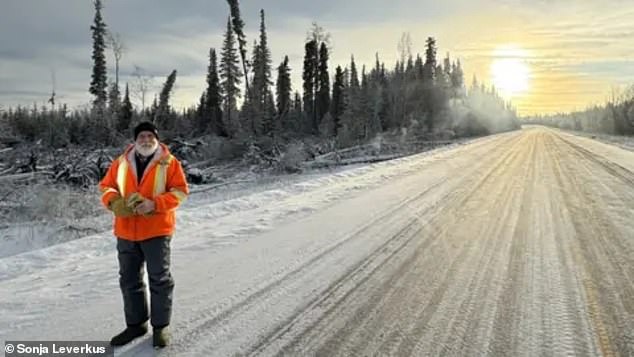
Combie fires, or flameless fires, are slow-burning fires that occur beneath the Earth’s surface and have sparked fears that the thaw will bring another smog-filled summer to the U.S.
Mike Flannigan, a professor and fire management expert at Thompson River University, said the increase in wildfires last year is one reason the area is seeing an increase in zombie fires.
He added that extreme drought, something British Columbia has been dealing with for years, has also contributed to the zombie fires.
According to the province’s drought map, British Columbia experienced moderate to extreme levels of drought in February.
As with the wintering fires, the drought’s presence has also been quite significant, as Leverkus noted that a creek she saw last summer has become “just puddles.”
Another worrying factor is that the area hasn’t received much snow or rain either, leaving more room for the smoky fires to burst into flames.
Tower said the zombie fires are currently being monitored by officials and if they continue to develop, there is a chance the province’s wildfire season could start as early as March or April.
